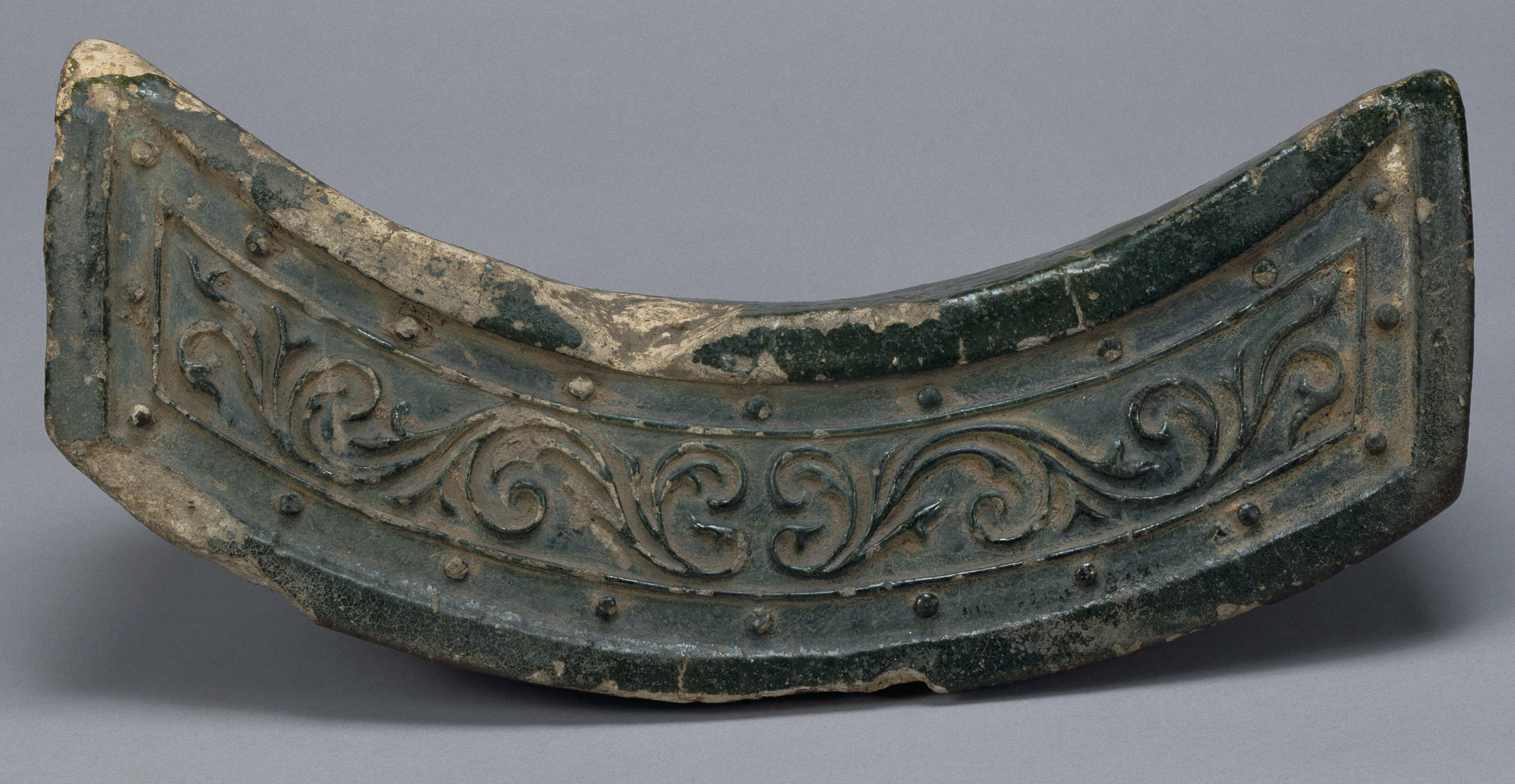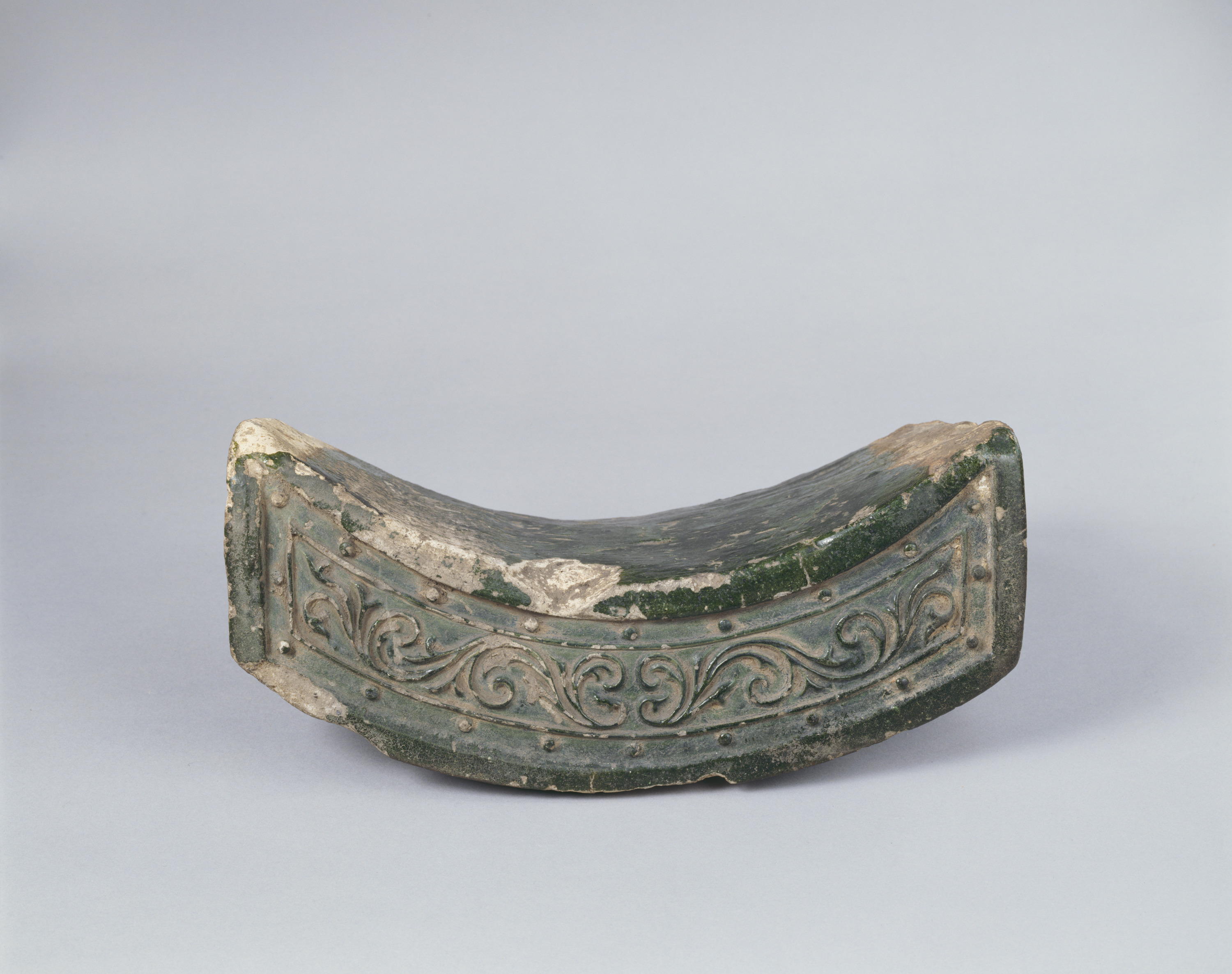- TOP
- Eaves Tile with Arabesques in Green Glaze from the Imperial Palace of Ancient Kyoto
Overview
Important Cultural Property
Eaves Tile with Arabesques in Green Glaze from the Imperial Palace of Ancient Kyoto
- Museum No.
- JK447-4
Showing 1-6 of 2
| Title | Eaves Tile with Arabesques in Green Glaze from the Imperial Palace of Ancient Kyoto |
|---|---|
| Designation | Important Cultural Property |
| Artist | |
| Category | Archaeology(J), Roof Tiles |
| Country | Japan |
| Period | Heian |
| Century | |
| Year | |
| Quantity | |
| Materials | |
| Dimensions | Width 34.2cm |
| Inscription by | |
| Signature/Seals Etc | |
| Donor |
Included Works
This object may be one within a set or the title of a set. To see all objects in the set, perform a Category Search by the Museum Number below, entering numerals only before the hyphen.












Ryokuyû is a type of glaze, which contains lead and turns green when fired at low temperatures. At Heijôkyô, the imperial palace of ancient Nara, ryokuyû tiles were used for the first time to cover the roofs of the palace, halls, and pagodas. At Heiankyô, the imperial palace of ancient Kyoto, the roofs of the main buildings, including Daigokuden ("Great Hall"), and the halls and pagodas of Tôji and Saiji Temples were also covered with ryokuyû tiles. These tiles were made not to cover the entire roof, but to decorate the eaves, the main ridge, and descending ridges of the roof.
Japan-Heian